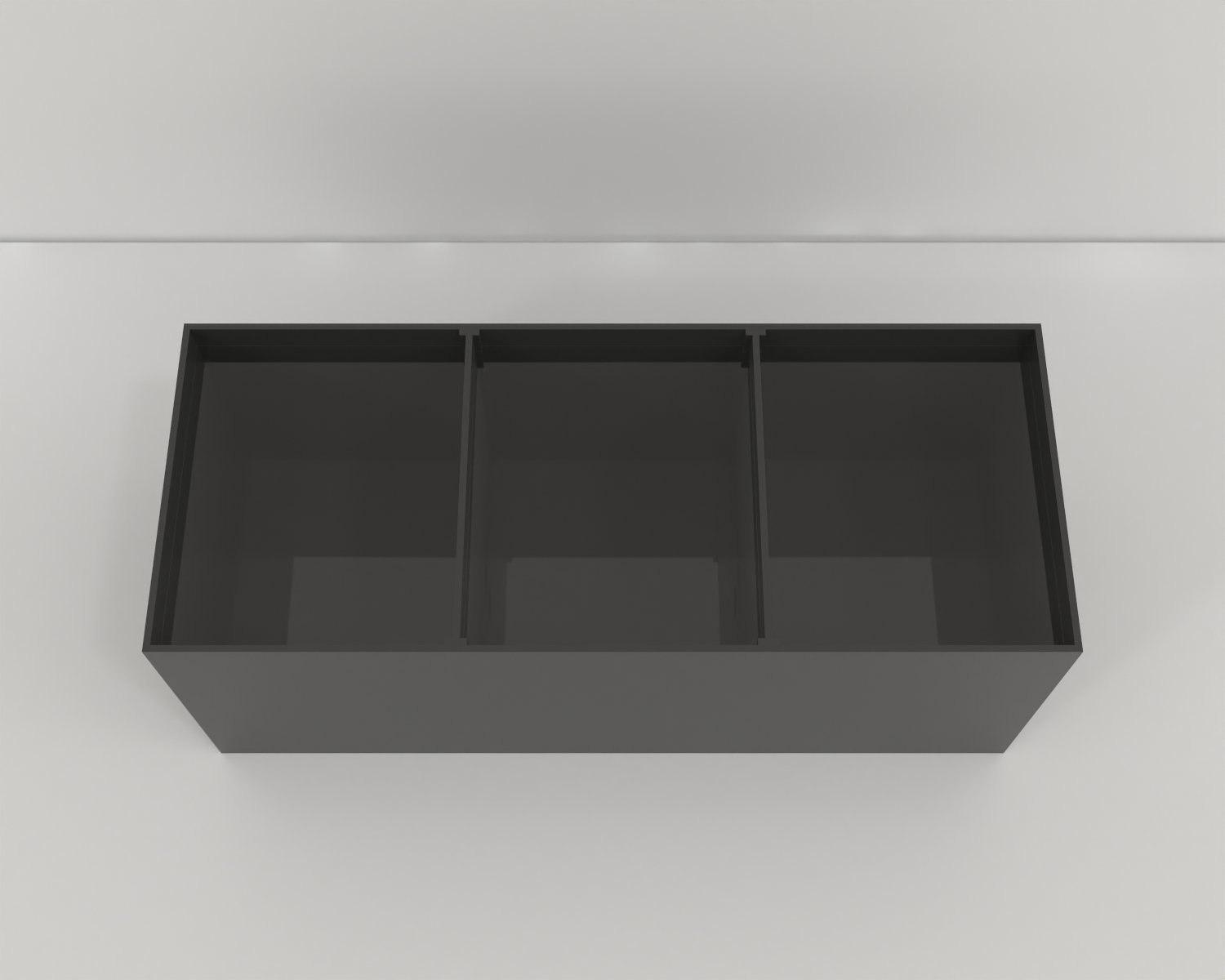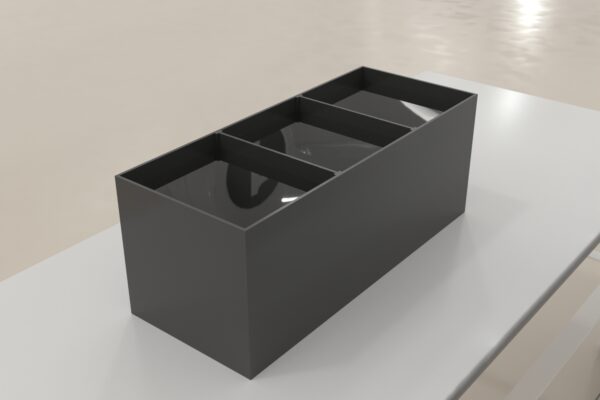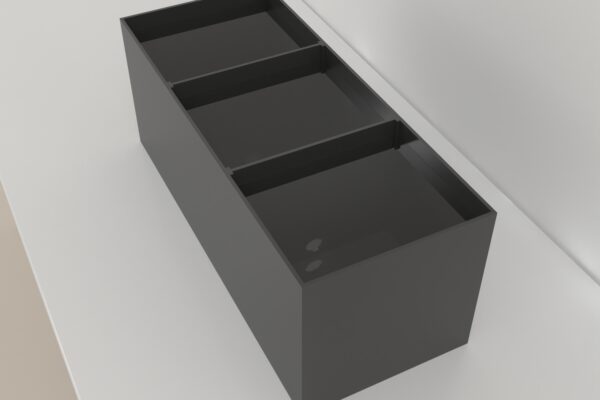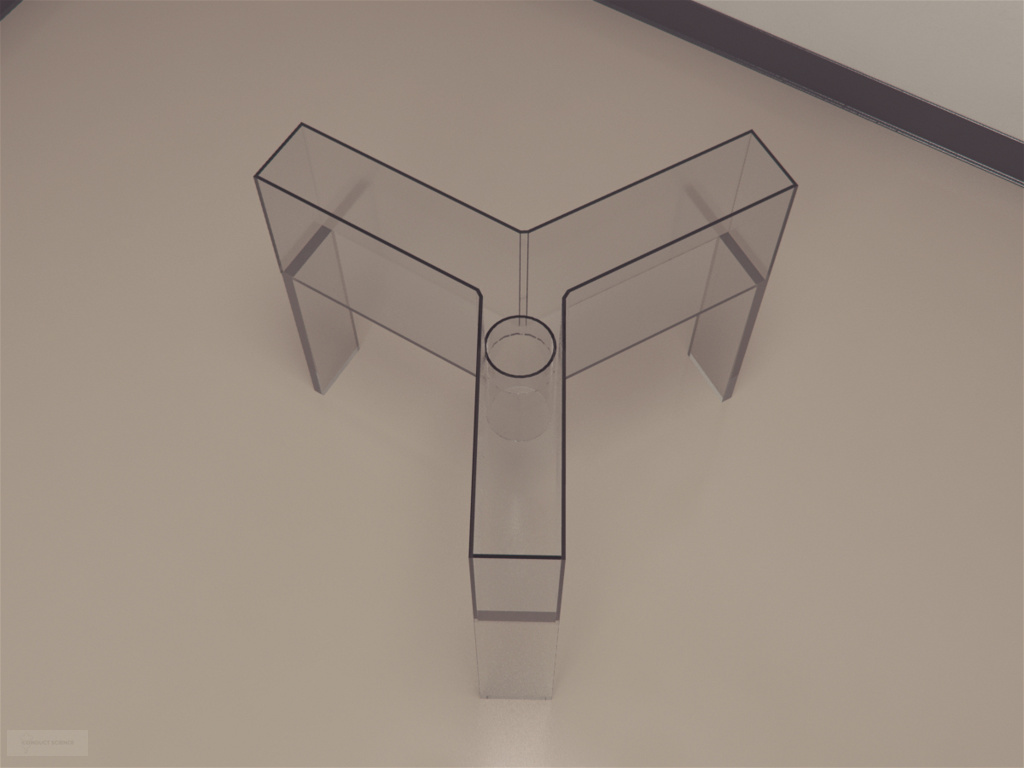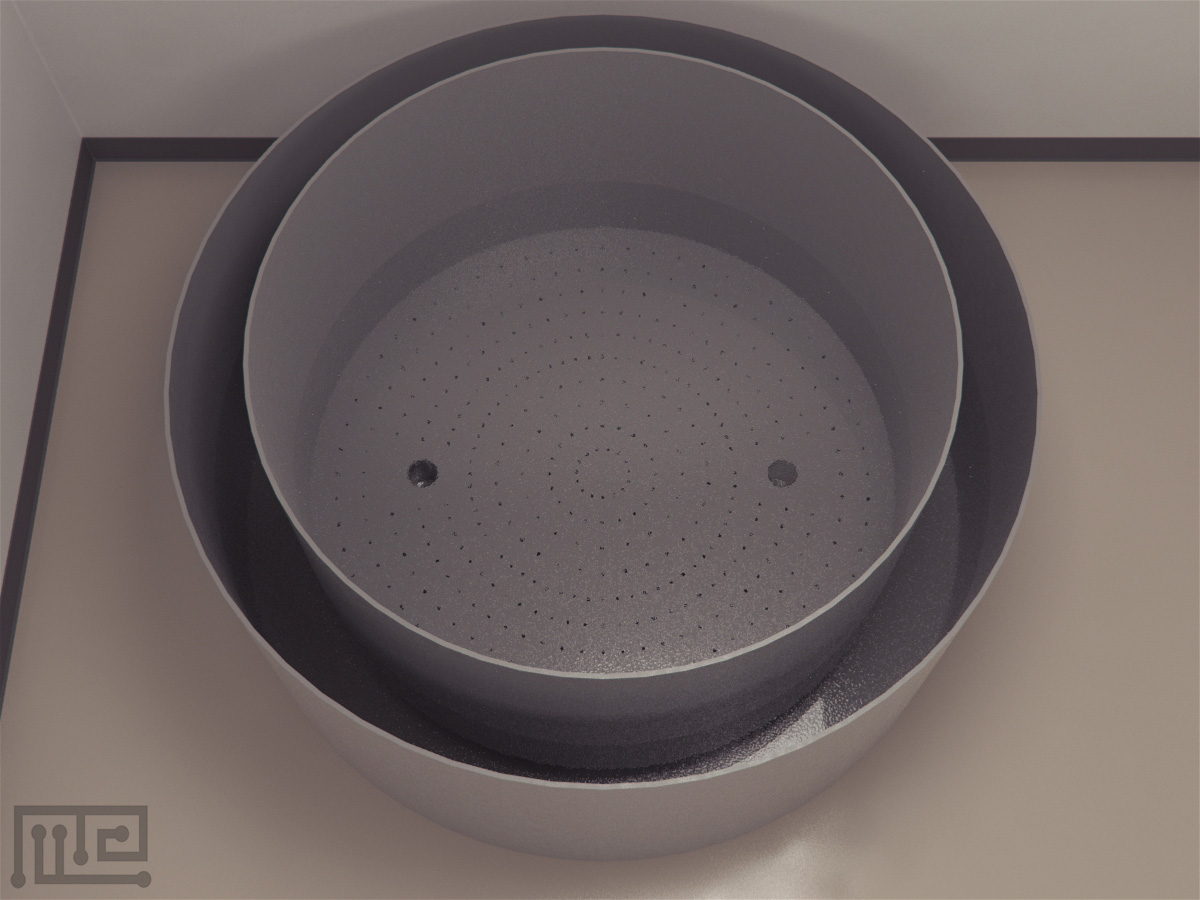Developed by Edsinger and Dölen (2018, the octopus three-chambered social apparatus is used to study social behavior in octopus. It consists of a glass aquarium divided into three equal chambers (one central chamber and two lateral chambers) using black plexiglass walls. Each chamber has a small circular entrance that allows the animal to move between them. Essentially, a social object consisting of a male or female conspecific is placed in one of the lateral chambers. The time the subject spends in the social chamber compared to the others is used to indicate its preference toward the social object.
Price and Specifications
Octopus
$ 1690
Per Month- Rectangular glass aquarium that measures 76 × 30 × 30 cm,
- Depth of 68.4 L. Black plexiglass walls divide the apparatus into three equal-sized chambers. Each chamber has a small circular entrance with a diameter of 3.5 cm that allows access between them. The apparatus’s outer walls are covered with blackout window film.
- Acrylic
- Easy clean with 70% Ethanol
- No Odors
- Matte Finish to remove shine
Introduction
Octopuses perform many of the daily tasks as vertebrates do and exhibit many of the same skills, particularly in learning and memory. This has made them a crucial species for research on comparative neurobiology and cognition. These comparative methods use both the similarities and the differences to learn more about the brain processes that underlie behavior. A significant difference between octopus and human behavior lies in their social behavior since several octopus’ species are usually described as solitary animals (Edsinger & Dölen, 2018). Therefore, studying octopus social behavior can be used to provide further insights for comparative studies. The octopus three-chambered social apparatus can readily observe social behavior and social preference in octopuses. One lateral chamber serves as the novel chamber used to place novel objects while the other serves as the social chamber used to place a social object. During the task, the subject is placed in the central chamber and is allowed to freely explore all three chambers for a predefined length of time. Therefore, experimenters can easily observe the subject’s social behaviors and preferences towards male and female conspecifics versus novel objects.
Several drugs, such as phenethylamine (+/−)-3,4 methylenedioxymethamphetamine (MDMA), are known to have powerful prosocial properties. Therefore, the apparatus can also be used to study the effects of treatment with drugs or stimulants on social behaviors. Essentially, if the subject displayed anti-social behaviors or aversive responses towards the social object pre-treatment but displayed positive social behavior post-treatment, it indicates that the drugs encouraged social approach. Other apparatuses used to study octopus behaviors include the Octopus 3 Choice Maze and the Octopus Round Arena.
Apparatus and Equipment
The octopus three-chambered social apparatus consists of a rectangular glass aquarium that measures 76 × 30 × 30 cm with a depth of 68.4 L. Black plexiglass walls divide the apparatus into three equal-sized chambers. Each chamber has a small circular entrance with a diameter of 3.5 cm that allows access between them. The apparatus’s outer walls are covered with blackout window film.
The subject to be tested can be placed in the center chamber of the apparatus by placing it inside a perforated screw top plastic cylindrical bottle weighted down using a 450 g C-shaped lead flask ring secured with Wet-Surface & Underwater Setting Epoxy. The other two lateral chambers are used as choice chambers. A novel object can be placed in one chamber and a conspecific can be placed in the other.
Octopus location can be tracked using a video tracking software package such as Noldus EthoVision, ANY-Maze, or BehaviorCloud.
Training Protocol
Appropriately light the apparatus. Prepare fresh seawater for each experiment. Scrub the apparatus in deionized water per seawater change. Place the apparatus in a quiet laboratory space during testing.
Octopus three chambered social apparatus task
Place an unfamiliar octopus in a screw-top plastic bottle or weighted orchid pot. Place the container with the octopus in one of the apparatus’s side chambers to act as a social object. The container allows the subject to have contact with the unfamiliar octopus but prevents fighting. Moreover, the container allows bidirectional access to visual, chemosensory, and tactile cues, which are used to provide social information.
Place one of the four novel objects in the other side chamber: a plastic orchid pot with red weight, a plastic bottle with green weight, a figurine, and a figurine of the same size as the previous one but of another color. Place the figurines in the orchid pot or the bottle to keep the size of the objects constant across all trials.
Place the subject in a perforated screw-top plastic cylindrical bottle, weighted down with a 450 g C-shaped lead flask ring secured with Wet-Surface & Underwater Setting Epoxy. Place the bottle in the center chamber of the apparatus. Allow the subject to remain inside the cylindrical bottle for two minutes for habituation.
Release the subject from the bottle and allow it to explore the apparatus for 30 minutes.
Data Analysis
The following parameters can be observed using the Octopus three-chambered social apparatus:
- The number of entries into each chamber of the apparatus defined as the presence of both eyes and mantle in one chamber.
- The amount of time spent in each chamber.
Literature Review
Quantification of social behaviors in octopus using the octopus three chambered social apparatus
Edsinger and Dölen (2018) utilized the octopus three-chambered social apparatus to experimentally quantify their social behaviors. The California Two-Spot Octopus (Octopus bimaculoides) was used in the study. One lateral chamber served as the object chamber and was used to place a novel object. The other lateral chamber served as a social chamber in which a male or female conspecific placed in perforated plastic containers was placed, which served as social objects. During testing, the subject was placed in the central chamber and was allowed to explore all three chambers for 30-minute sessions. The number of entries into each chamber and the time spent in each of them were recorded. The results indicated that both male and female subjects spent significantly more time in the lateral chamber when a female was the social object compared to the central chamber. In contrast, when a male conspecific was used as a social object, the subject spent more time in the object chamber than the central chamber. Therefore, the subjects displayed a significant preference for interactions with female social objects than male social objects.
The experimenters also tested the functional conservation of phenethylamine (+/−)-3,4 methylenedioxymethamphetamine (MDMA) in the octopus since it is known for having powerful prosocial properties. Testing whether MDMA encourages a social approach to a social object that is often aversive would be the best test for functional conservation. Therefore, the experiment tested the social approach of octopuses to a male social object before and after treatment with MDMA. Similar to the previous experiment, the subject was allowed to explore the apparatus with a novel object or a male conspecific placed in each of the lateral chambers. The results indicated that the amount of time spent with the social object increased significantly after MDMA treatment, while the amount of time spent in the object chamber and the center chambers did not differ significantly between pre- and post-MDMA conditions.
Strengths
The Octopus three-chambered social apparatus can be used to study social behaviors in octopuses by examining the time the subject spends near a social object versus a novel object. The black plexiglass walls prevent the subject from viewing the inside of the lateral chambers; therefore, the subject needs to enter the chambers to view the objects. This allows the apparatus to also be used for two-choice experiments. The apparatus is large enough to place adult animals.
Summary
The Octopus three-chambered social apparatus is used to study social behaviors in octopus.
- It consists of a glass aquarium divided into three equal chambers (one central chamber and two lateral chambers) using black plexiglass walls.
- The subject can move between the chambers through small circular entrances present at the bottom of each partition.
- One lateral chamber serves as the novel chamber used to place novel objects while the other serves as the social chamber used to place a social object.
- The time the subject spends in the social chamber compared to the others is used to indicate its preference toward the social object.
- The apparatus can also be used to study the effects of treatment with drugs or stimulants on social behaviors.
- The apparatus is large enough to place adult animals.
References
Edsinger, E., & Dölen, G. (2018). A Conserved Role for Serotonergic Neurotransmission in Mediating Social Behavior in Octopus. Current biology : CB, 28(19), 3136–3142.e4. https://doi.org/10.1016/j.cub.2018.07.061
Are you an academic scientist and creator?
Learn how your lab can tech transfer this and similar devices from your lab to industry.

